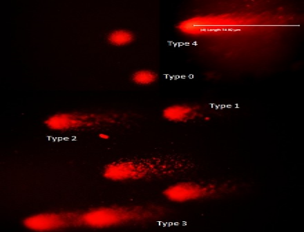Abstract
Disused muscle atrophy (DMA) causes severe problems in aging society especially bedridden people. Oxidative stress is proposed to be involved in the pathogenesis of DMA. Hibiscus sabdariffa L. (HS) or roselle contains high flavonoids, a compound previously shown to be an effective antioxidant, antihypertensive and antidiabetic agent. Thus, the present study investigated the protective effects of HS against oxidative stress in the hind limb of immobilized rats. Twenty-eight male Sprague-Dawley rats were randomly divided into four groups (n=6 per group): Control group received no intervention; Immobilized group received unilateral hind limb immobilization for five days; HS group received 100 mg/kg/bw through oral force feeding for 28 days; Immobilized + HS group received unilateral hind limb immobilization for five days followed by 28-days HS treatment with the same dosage. Blood samples were collected and analysed for DNA damage, lipid peroxidation and oxidative enzyme. Data were presented as mean ± SEM and statistically analysed by ANOVA. The results showed a significant increase in percentage of mild DNA damage after HS treatment in hind limb immobilized rat (Control: 86.5±1.4%; Immobilized: 25.0±5.5%; HS: 37.0±3.5%; Immobilized + HS: 56.7±7.9%, P=0.003). There was also significant increase in plasma catalase activity after HS treatment (plasma [hydrogen peroxide] in Control: 72.5±0.3 µg/ml; Immobilized: 65.1±1.3 µg/ml; HS: 68.3±3.2 µg/ml; Immobilized + HS: 56.5±4.9 µg/ml, P=0.006) but not in plasma malondialdehyde (MDA) level. In conclusion, these findings suggested that HS treatment may prevent oxidative stress-induced DMA in the rats' hind limb immobilization model.
Full text article
Authors

This work is licensed under a Creative Commons Attribution-NonCommercial-NoDerivatives 4.0 International License.

